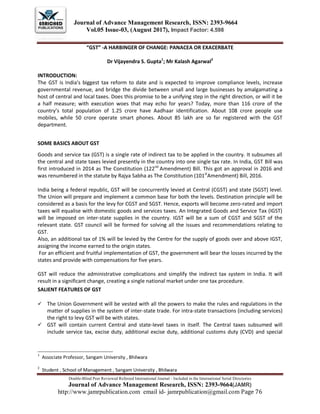This document provides an overview of the Goods and Services Tax (GST) implemented in India in 2017, including its basics, salient features, rationale, and impact on various sectors. Key points:
1) GST consolidates many indirect taxes into a single tax rate and aims to simplify taxation, increase revenue, and create a unified market. However, implementation challenges may arise.
2) GST consists of CGST, SGST, and IGST and is levied on the supply of goods and services. It is expected to boost the economy by reducing costs and complexity.
3) Sectors like education, FMCG, pharmaceuticals, healthcare, finance, and insurance will be impacted, with some






